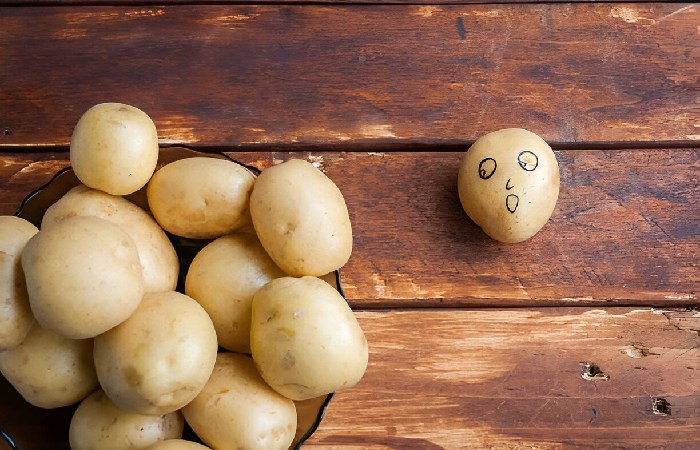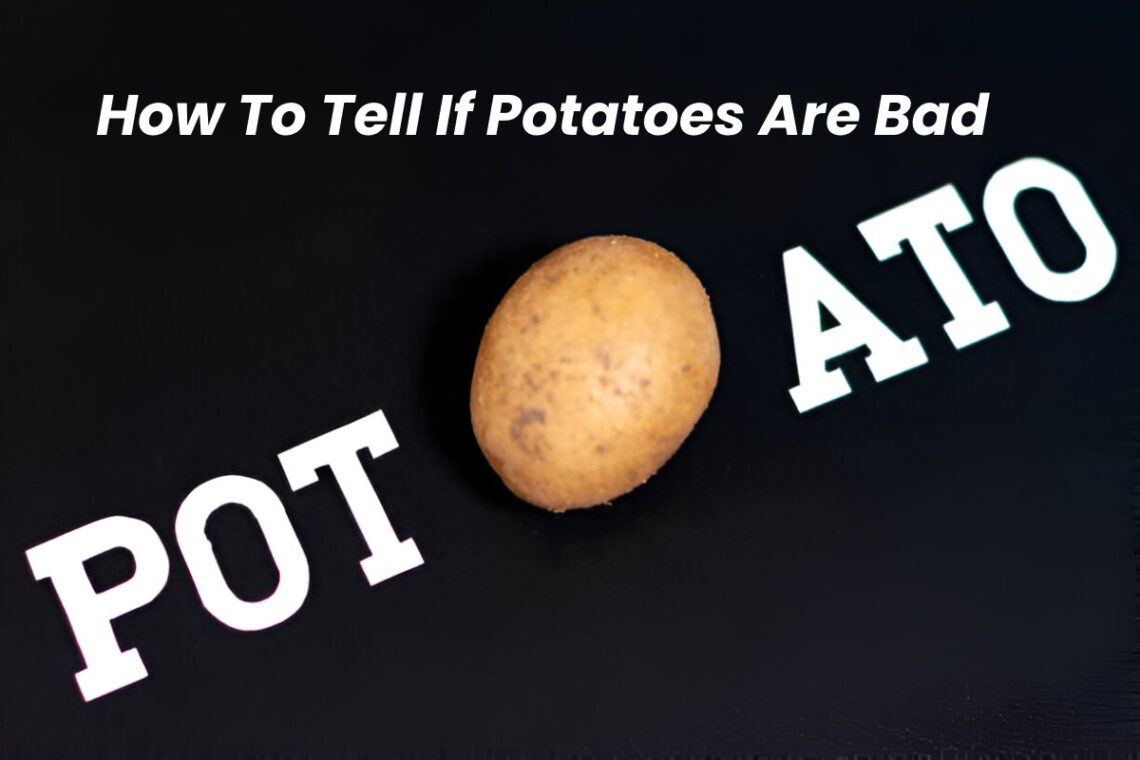How To Tell If Potatoes Are Bad – When it comes to potatoes, freshness is key. If your potatoes have sprouted, they’re past their prime. Remove the sprouts and use the rest promptly. Green areas on the skin indicate the presence of solanine, a natural toxin. Cut away the green parts before cooking. Wrinkled or soft potatoes may be spoiled. Discard them. Give your potatoes a sniff. If they smell musty, rotten, or off, it’s best not to use them.
Remember, when in doubt, it’s safer to discard questionable potatoes. Freshness ensures better taste and nutritional value!
Signs of How To Tell If Potatoes Are Bad

To regulate if potatoes are bad, consider the following signs:
Raw Potatoes:
- Check for a soft texture or wrinkled skin. Firm potatoes are good; mushy ones may be rotting.
- Inspect the skin for bruises, black spots, or other visible blemishes.
- Smell the potato: it should be earthy, nutty, and starchy. A bad potato smells bitter, musty, or moldy.
- Sprouts: Small sprouts (or “eyes”) are normal, but excessive sprouting indicates aging.
- Green Sprouts: While slightly green is okay, avoid eating fully green potatoes due to the toxic compound solanine.
Cooked Potatoes:
- A strong foul odor or visible mold indicates spoilage.
- Cut off the sprouts if a potato has sprouted and use the rest.
- You can eat slightly green potatoes, but avoid fully green ones
How Can I Store Potatoes To Keep Them Fresh?
To store potatoes and keep them fresh for an extended period, follow these steps:
- Inspect: Check all the potatoes for soft spots, mold, shovel damage, sprouts, and pest damage. Only perfect potatoes are apposite for long-term storage.
- Ventilation: Place the potatoes in a cardboard box, mesh bag, paper bag, or basket to ensure good ventilation. Avoid plastic bags, as they trick moisture and shorten shelf life.
- Ideal Conditions: Store your potatoes in a cool, humid, dark place with a temperature range of 45 degree to 50 degree Farheinhet (7 to 10°C). An unheated basement or insulated garage works well.
- Avoid Fridge: Never store potatoes in the fridge; the cold temperature turns starch into sugar.
- Regular Check: Check on your potatoes frequently and remove any shriveled, soft, or sprouted to prevent spoilage .
What Are Some Delicious Potato Recipes?
Potatoes are incredibly multipurpose, with countless delicious ways to enjoy them. Here are a few mouthwatering potato recipes:
- Hasselback Potatoes: These crispy, herb-infused potatoes are a delightful appetizer or side dish. They’re sliced accordion-style, brushed with butter, and baked until golden brown. Serve them alongside a creamy soup or pasta dish for a satisfying meal .
- Melt-in-Your-Mouth Potatoes: Imagine roasted potatoes with a crispy exterior and a fluffy interior. These are seasoned with thyme, rosemary, and garlic, then smothered in chicken broth for extra flavor.
- Parmesan Potato Wedges: Crispy wedges coated in Parmesan cheese make a fantastic side dish. Pair them with a salad or serve alongside chicken or beef.
- Cheese Smashed Potatoes: Creamy mashed potatoes with a cheesy twist. Enjoy them with any main course.
- Rosemary Potatoes with Caramelized Onions: Roasted potatoes infused with rosemary and topped with sweet caramelized onions. A flavor-packed side dish.
- Two-Tone Baked Potatoes: A creative twist on classic baked potatoes. Perfect for spud enthusiasts.
Potatoes can baked, mashed, fried, or roasted, so feel free to experiment and create your potato masterpieces.
How To Tell If Potatoes Are Bad – Conclusion
Potatoes are a starchy root vegetable. It is known for their long shelf life. Yet, Know that how long they last depends on how they are stored and cooked. Potatoes have gone bad if they show visible signs such as mould, green parts, sprouts, soft or mushy texture, musty smell, or changed taste. If stored in a cool, dark, dry place, raw potatoes can last for several months. But once cooked, they should be eaten or frozen within a few days to prevent food borne illness.
Solanine and chaconine can cause gastrointestinal problems. The symptoms are as vomiting, abdominal pain, and diarrhea. There have been a few instances of death from eating toxic potatoes.
Be sure to throw away potatoes that give a strong odor or mold growth.

